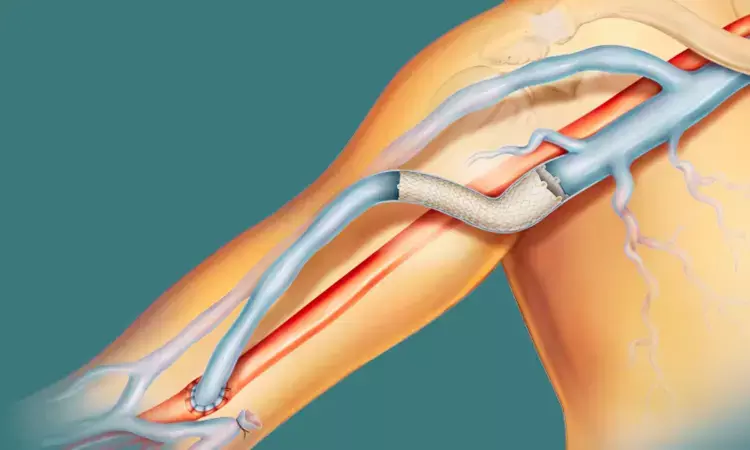- Home
- Medical news & Guidelines
- Anesthesiology
- Cardiology and CTVS
- Critical Care
- Dentistry
- Dermatology
- Diabetes and Endocrinology
- ENT
- Gastroenterology
- Medicine
- Nephrology
- Neurology
- Obstretics-Gynaecology
- Oncology
- Ophthalmology
- Orthopaedics
- Pediatrics-Neonatology
- Psychiatry
- Pulmonology
- Radiology
- Surgery
- Urology
- Laboratory Medicine
- Diet
- Nursing
- Paramedical
- Physiotherapy
- Health news
- Fact Check
- Bone Health Fact Check
- Brain Health Fact Check
- Cancer Related Fact Check
- Child Care Fact Check
- Dental and oral health fact check
- Diabetes and metabolic health fact check
- Diet and Nutrition Fact Check
- Eye and ENT Care Fact Check
- Fitness fact check
- Gut health fact check
- Heart health fact check
- Kidney health fact check
- Medical education fact check
- Men's health fact check
- Respiratory fact check
- Skin and hair care fact check
- Vaccine and Immunization fact check
- Women's health fact check
- AYUSH
- State News
- Andaman and Nicobar Islands
- Andhra Pradesh
- Arunachal Pradesh
- Assam
- Bihar
- Chandigarh
- Chattisgarh
- Dadra and Nagar Haveli
- Daman and Diu
- Delhi
- Goa
- Gujarat
- Haryana
- Himachal Pradesh
- Jammu & Kashmir
- Jharkhand
- Karnataka
- Kerala
- Ladakh
- Lakshadweep
- Madhya Pradesh
- Maharashtra
- Manipur
- Meghalaya
- Mizoram
- Nagaland
- Odisha
- Puducherry
- Punjab
- Rajasthan
- Sikkim
- Tamil Nadu
- Telangana
- Tripura
- Uttar Pradesh
- Uttrakhand
- West Bengal
- Medical Education
- Industry
Covered Stents Offer New Bypass Solution for Complex Central Venous Occlusion: Case Report

China: In a recent case report, researchers have demonstrated the efficacy of using covered stents as a bypass solution for treating central venous occlusion (CVO), particularly in challenging cases involving long, angled occlusions with or without calcification. This novel approach offers a promising alternative to traditional treatments and could significantly impact the management of central venous issues.
"Covered stents offer a novel solution for treating long, angled central venous occlusions, with or without calcification, by establishing an extravascular bypass between central veins," the researchers wrote in BMC Nephrology.
Central venous occlusion is a severe condition that can occur when veins in the chest become blocked, often due to factors like thrombosis or external compression. Traditional treatments, such as angioplasty or thrombolysis, may not always be effective, especially in complex cases where the occlusion is extensive or involves calcified lesions. These limitations have prompted the exploration of new methods to restore venous patency and improve patient outcomes.
In the study, Xiaomeng Liu, Department of Dialysis, Heilongjiang Provincial Hospital, Zhongshan Road, Xiangfang District, Harbin, Heilongjiang Province, China, and colleagues devised a new method for establishing an extra-anatomic bypass between the right subclavian vein and the superior vena cava via a covered stent to treat whole-segment occlusion of the right brachiocephalic vein (BCV) with calcification.
The research team described the case of a 58-year-old woman who presented with persistent swelling in her right arm, ongoing for 1.5 years. The patient had been undergoing hemodialysis since developing end-stage renal disease due to chronic glomerulonephritis. Initially, a right internal jugular vein (IJV)-tunneled cuffed catheter was used for dialysis access, which was replaced once in the first three years. Subsequently, a left arteriovenous fistula (AVF) was created. Due to occlusion of the left AVF, a new fistula was established in the right upper arm 1.5 years before her current visit.
Angiography of the right upper extremity revealed complete occlusion of the right brachiocephalic vein (BCV) and IJV, accompanied by calcification. Unable to pass a guidewire through the lesion, an extra-anatomic bypass was created between the right subclavian vein and the superior vena cava using a covered stent. Follow-up angiography confirmed the patency of the entire vascular access system. Three months later, both the AVF function and the bypass remained satisfactory.
"We introduced an endovascular technique to create a bypass between central veins for restoring AVF blood flow. Angiography showed no leakage at the stent anastomosis. Three months post-operation, AVF function, dialysis adequacy, and anemia improved. This method offers a novel, effective approach for treating complex central venous occlusions, though long-term safety needs further evaluation," the researchers concluded.
Reference:
Xu, Z., He, Y. & Liu, X. Utility of covered stents as a bypass for the treatment of central venous occlusion: a case report. BMC Nephrol 25, 271 (2024). https://doi.org/10.1186/s12882-024-03718-4
Dr Kamal Kant Kohli-MBBS, DTCD- a chest specialist with more than 30 years of practice and a flair for writing clinical articles, Dr Kamal Kant Kohli joined Medical Dialogues as a Chief Editor of Medical News. Besides writing articles, as an editor, he proofreads and verifies all the medical content published on Medical Dialogues including those coming from journals, studies,medical conferences,guidelines etc. Email: drkohli@medicaldialogues.in. Contact no. 011-43720751


